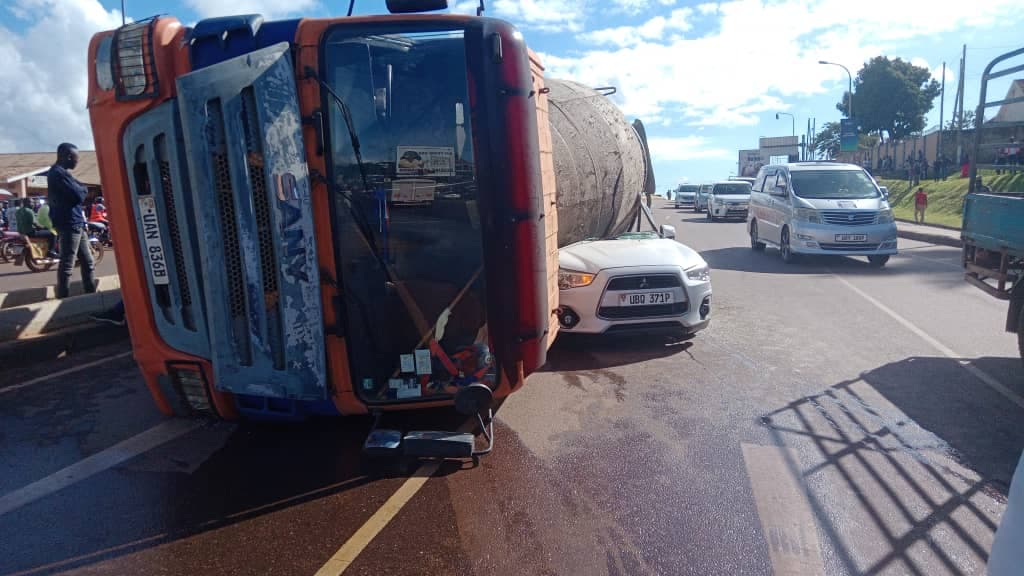Loading News Article...
We're loading the full news article for you. This includes the article content, images, author information, and related articles.
We're loading the full news article for you. This includes the article content, images, author information, and related articles.
Dashcam footage of a concrete mixer truck overturning on Thursday morning has intensified scrutiny on the safety and regulation of heavy commercial vehicles along Kenya's most vital economic corridor.

NAIROBI, Kenya – A concrete mixer truck overturned on Mombasa Road during the morning rush hour on Thursday, November 27, 2025, causing a major traffic snarl-up and renewing urgent calls for enhanced safety measures for heavy commercial vehicles (HCVs). The dramatic incident, captured by a motorist's dashboard camera, quickly circulated on social media, providing a stark visual of the daily risks faced by commuters on one of East Africa's busiest highways.
The accident occurred at approximately 6:49 AM EAT near the Athi River section of the highway, a critical artery for both passenger and commercial traffic. According to initial police reports from the scene, the driver lost control of the vehicle, which then tipped onto its side, blocking at least two lanes of traffic heading towards Nairobi. Emergency services and traffic police were dispatched to the scene to manage the resulting congestion, which stretched for several kilometers. DETAILS UNCONFIRMED regarding the cause of the driver losing control and the number of injuries sustained.
This incident is the latest in a troubling series of accidents involving HCVs on major Kenyan roads. Just days prior, on November 23, 2025, three people were killed and fifteen were injured when a lorry collided with a public service vehicle near the Mua Bridge on the same highway. These events highlight a persistent and deadly problem on Kenya's transport network.
According to the National Transport and Safety Authority (NTSA), road accidents involving HCVs are a significant contributor to the country's high fatality rate. A report covering the 2024/25 financial year showed a 10% increase in road fatalities, with 3,581 lives lost between June 2024 and March 2025. Nairobi County, which Mombasa Road dissects, consistently records the highest number of fatalities. Common causes cited in NTSA reports include losing control of the vehicle, improper overtaking, and lane indiscipline—factors often exacerbated by driver fatigue, mechanical failure, or overloading.
The economic consequences of such incidents are immense. Traffic jams on Mombasa Road are estimated to cost the Kenyan economy up to KSh 100 billion annually, or about KSh 11 million per hour in lost productivity, delayed cargo, and increased fuel consumption. As a key segment of the Northern Corridor, the highway handles over 30 million tonnes of cargo annually, serving landlocked nations like Uganda, Rwanda, and South Sudan. When a single truck overturns, the ripple effects are felt across the entire region, undermining supply chain reliability and increasing the cost of doing business.
Transport sector analysts and safety advocates argue that Thursday's accident underscores long-standing gaps in the enforcement of existing traffic laws. Key issues include the circumvention of speed governors, vehicle overloading which places undue strain on braking systems and tyres, and inadequate vehicle maintenance. While authorities like the NTSA and the Kenya National Highways Authority (KeNHA) have implemented measures, including the recent reintroduction of breathalyzers and crackdowns on unroadworthy vehicles, challenges persist.
In April 2024, the NTSA launched its National Road Safety Action Plan for 2024–2028, aiming to curb the rising tide of accidents. The plan focuses on moving from planning to enforcement-led action. However, the effectiveness of this strategy hinges on consistent and incorruptible implementation on the ground.
The proliferation of dashcams is also changing the landscape of accident reporting and accountability. The footage from Thursday's incident provides investigators with crucial, objective evidence that can aid in determining the cause and liability. This technology empowers ordinary citizens to contribute to road safety monitoring, putting pressure on both drivers and law enforcement to adhere to regulations.
As KeNHA works to clear the scene and restore normal traffic flow, the conversation sparked by the widely-shared video must translate into concrete action. For the thousands of Kenyans who rely on Mombasa Road daily, this incident is not just a momentary inconvenience but a grave reminder of the urgent need to address the systemic failures that continue to make the country's highways dangerously unpredictable.
Keep the conversation in one place—threads here stay linked to the story and in the forums.
Other hot threads
E-sports and Gaming Community in Kenya
Active 6 months ago
Popular Recreational Activities Across Counties
Active 6 months ago
Investing in Youth Sports Development Programs
Active 6 months ago
The Role of Technology in Modern Agriculture (AgriTech)
Active 6 months ago